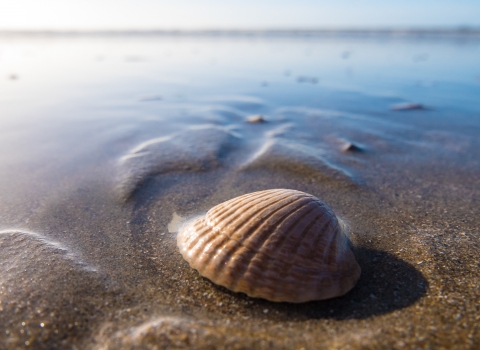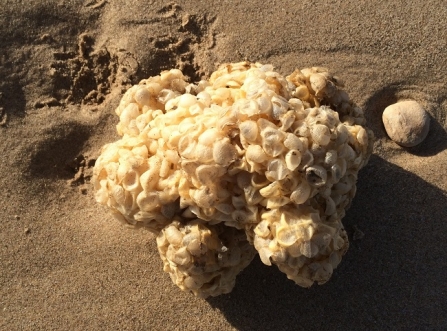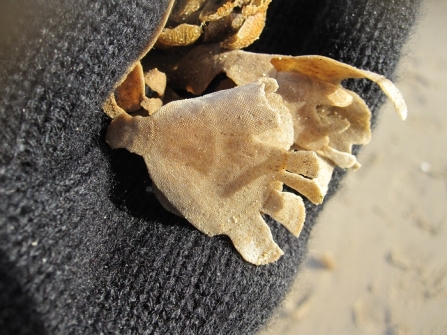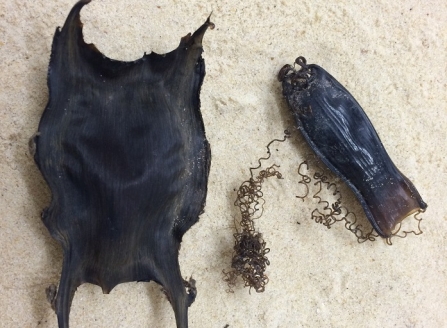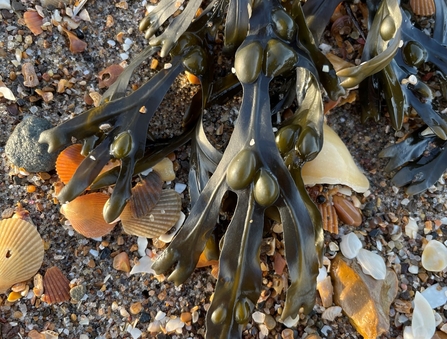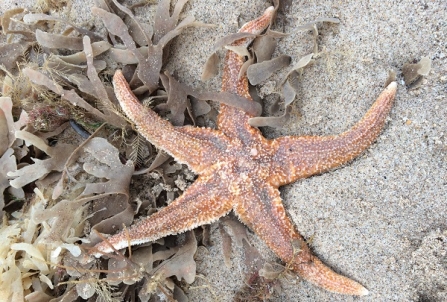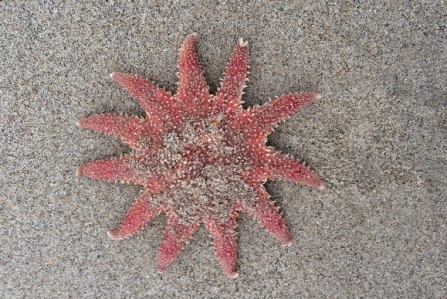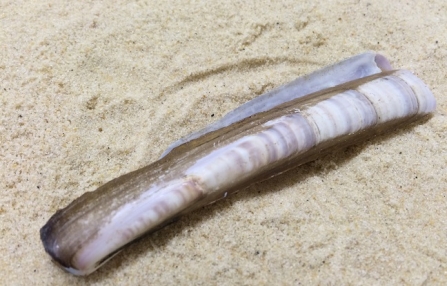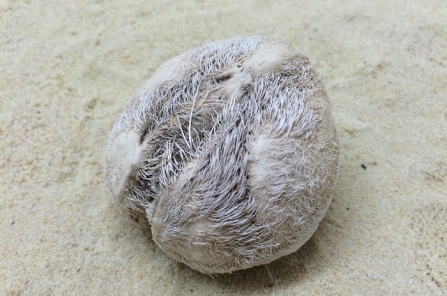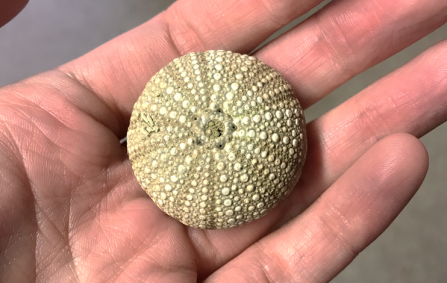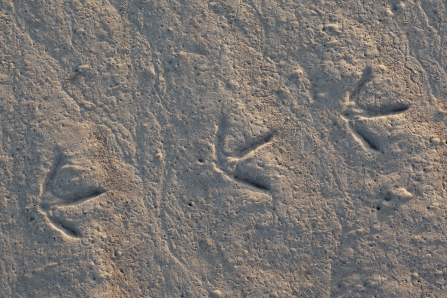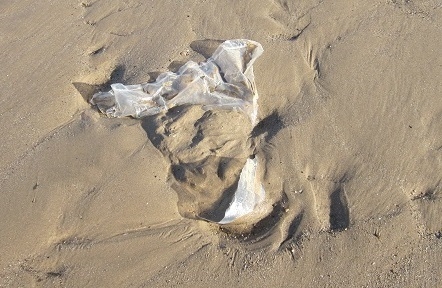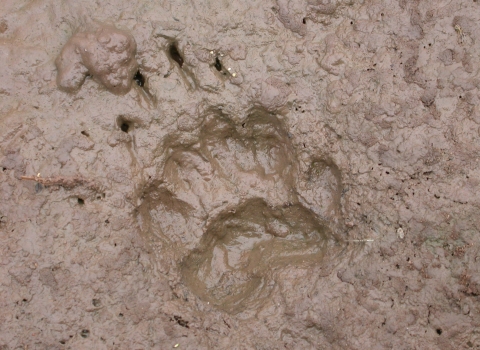What have I found?
Here are some things to look for when you go walking along the coastline - click on the photos to see the full size images. If you find something sharp or come across a jellyfish, don't touch it! If you're unsure, take a photograph and identify it when you're back at home.
Whelk egg case
Similar looking to a lump of bubble wrap, these egg cases have been made by whelks - the largest sea snail found in UK seas. Now empty and dried up, these once spongy balls can be made of up to 2000 egg capsules.
Hornwrack
Think you've found some seaweed? Think again! This is actually a colony of thousands of animals called a bryozoan. If you look closely at the hornwrack, you will see it is a mesh of little boxes; each of which would have been home to an individual animal, or zooid. If you find a fresh piece before it's dried, give it a sniff! It smells like lemon zest.
Mermaid's purses
Find one of these on the beach, and chances are you’ve found a SHARK! Yep, these tough, leathery pouches washed up on the beach are actually the egg cases of sharks and rays. The long, slender ones with curly tendrils are the egg cases of sharks, and the fatter, squarer ones with 'horns' are the egg cases of rays.
Bladder wrack
Bladder wrack is an olive-brown 'wrack' seaweed. It can be recognised by its strap-like, branching fronds that have air-filled 'bladders' along their length (often appearing in pairs either side of the pronounced mid-rib). These distinct round air bladders allow the seaweed to float upright underwater.
Common seastar
Common seastar (or starfish) found in rockpools and out at sea to depths of at least 600m. You may come across them on beaches after a storm when there has been an especially stormy sea. Starfish have an amazing ability to regenerate lost limbs - meaning you'll sometimes spot a starfish with 4 normal sized legs and 1 small leg.
Common sunstar
This large starfish looks just like the sun, with 10-12 (but occasionally 8-16) arms spreading outwards like rays. It has an orangey-red disc (the centre) with beautiful concentric bands of yellow, orange, pink or white. Small sunstars are sometimes found in rockpools, but you'll most likely see them washed up on the beach after a storm.
Razor shell
Razor shells (or razor clams) are very recognisable, with their long, narrow clam shells. These burrowing clams would have lived buried in the sand around the low tide mark out to around 60m deep. After storms, huge numbers of razor clam shells often wash up on beaches.
Sea potato
The sea potato is a type of sea urchin that lives buried in the sand. When alive, it is covered in fine, beige spines that give it a furry appearance. Often, the empty test (shell) is found washed ashore and is white and brittle. The test is distinctively heart shaped - giving them their other common name of heart urchin (slightly nicer than sea potato!)
Common sea urchin
The sea urchin is often a pinkish-purple colour but it can be red, green or yellow. It lives on the seabed down to depths of 40m and can occasionally be found after storms. The pattern of spots are the remains of it's short, strong spines which would have protected it. Their scientific name "Echinus" comes from the Greek word for hedgehog!
Wading birds
These prints can be easy to differentiate, but determining specific species is a different ball game! Wader prints are similar to duck prints, just without the webbing, and are disproportionately large in relation to body size. They also tend to walk in straight lines, with one foot in front of the other.
Marine litter
Unfortunately it's not a jellyfish, but a plastic bag, now not an uncommon sight on our coastline. Marine litter, and in particular plastic, can cause huge damage to our marine wildlife. Why not do your own 2-minute beach clean, or join us for one of our beach cleaning events, and help us to keep our coast clean and safe for wildlife.

